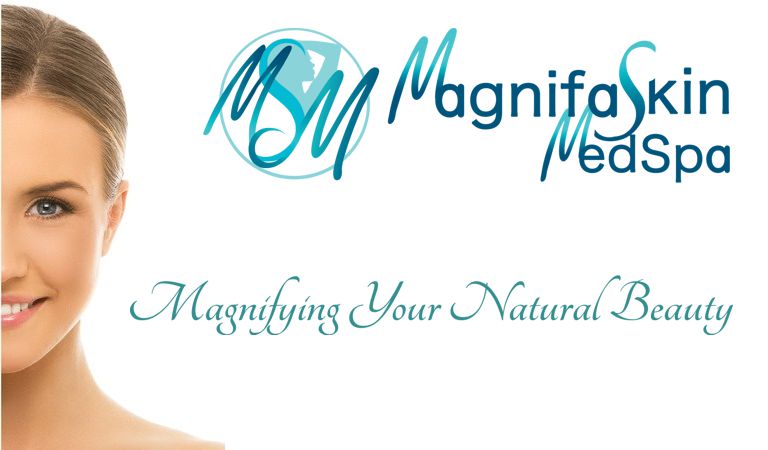Sclerotherapy - Varicose Veins Treatment
The Science of Flaw Correction

Varicose veins, those ugly twisting enlarged veins that often appear in our legs as we age, are the result of failing valves within the veins themselves. The veins in our legs have one-way valves, which help to keep the blood flowing upward to our heart and lungs. When these valves weaken or fail as we age, blood pools in the vein and varicose veins result. Fortunately you don’t have to live with this unsightly and often uncomfortable affliction. Safe, proven and effective varicose veins treatment is available.

Be the first to know about new Specials, and blog posts with valuable free information on skin care, beauty and wellness. Sign up below and you'll receive an email notice of new specials as well as new posts. You can unsubscribe at any time.
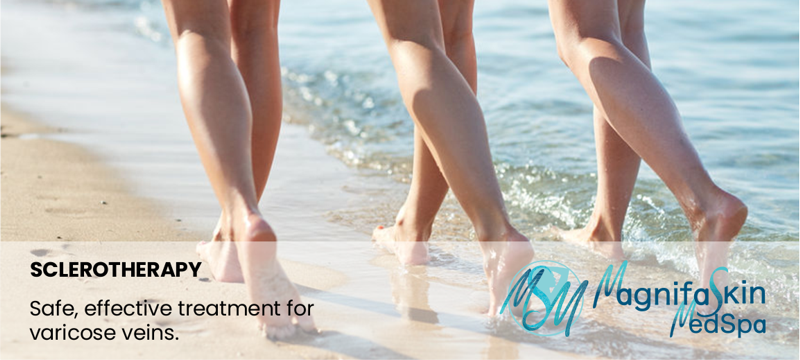
You don’t need us to tell you what varicose veins are. You know if you have them and if you’re lucky, they’re just unsightly. If you're not so lucky, they are also tender and may be causing swelling in your legs and feet. But why do we get them, what are they, and how do we treat them at MagnifaSkin medical spa?
What Causes Varicose Veins
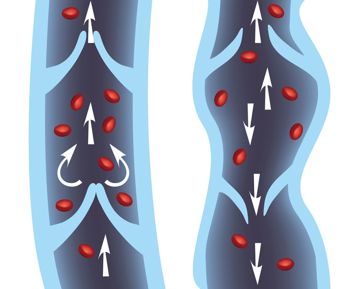
In a normal healthy vein one-way valves hold blood in place between heartbeats. In a varicose vein the valves are no longer working properly, allowing blood to flow backward and causing pooling in the vein.
While our heart is an extremely strong muscle that pushes blood through our entire body, it’s not strong enough to push the blood back up our extremities without some help. Veins that are returning blood to our heart and lungs, and this includes the veins in our legs, rely on one-way valves to hold the blood in place between heartbeats.
Each beat pushes the blood up to the next section of the vein. As our heart produces pressure on the beat, the blood is pushed through a one-way valve. When the heart is resting between beats that valve holds the blood in place until the next beat. Varicose veins occur when the valves no longer work properly. Instead of holding the blood in place in that section of the vein, the valve allows the blood to flow backward from the force of gravity, pooling in the vein. This causes the vein to bulge and twist. The often blue color of varicose veins is caused by the darker color of the deoxygenated blood pooling under our skin.
In addition, the veins on the surface are sitting on top of the muscle where they don’t have the benefit of exterior support from surrounding tissues. This means that most varicose veins form on the surface. While interior varicose veins can happen, they are rare and we can’t treat them here. You’ll need to see your doctor if you have an interior varicose vein.
Why Do We Get Varicose Veins?
Varicose veins are very common. Almost ¼ of adult Americans have varicose veins, and women are twice as likely as men to suffer from them. We’re not certain of all the reasons why this is, but lower testosterone resulting in less dense muscles and the pressures caused by pregnancy are two known reasons.
Varicose veins most often form as a result of constant pressure on the vein. This can be caused if you work in a job that has you standing or walking all day. In addition. Obesity, chronic constipation, and as already mentioned, pregnancy, can be contributing factors.
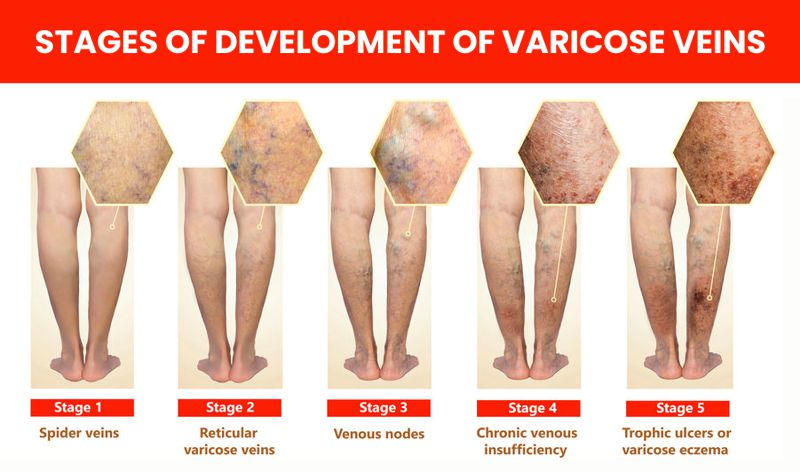
Without treatment, varicose veins can develop into ulcers and eczema.
Sclerotherapy
Fortunately, there’s an effective treatment for varicose veins, and it’s been around for much longer than you might think.
The first varicose vein treatment was attempted by one D Zolliker in Switzerland in 1682! Mr. Zolliker injected acid into the vein to produce a blood clot. Subsequent treatments in the next 200 years involved such substances as perchlorate of iron (a highly oxidative salt) and an iodine/tannin mix. Ouch! It’s no wonder that by the end of the 19th-century injectable varicose vein treatments had all but been abandoned in favor of ‘vein stripping’, a surgical procedure which removed the affected veins. No doubt the fact that surgical anesthetics were being widely used by this time had something to do with this.
Modern treatments have been around since the 1930s. Today we inject a solution, usually a salt solution – it turns out that whoever was trying perchlorate of iron a couple of hundred years ago was on the right track. This solution irritates the lining of the vein, causing the walls to stick together and the vein to collapse. The collapsed vein then dies from a lack of blood flow. This might sound scary, but it’s actually good. Your body can deal just fine with small amounts of dead tissue, and simply gradually breaks down and absorbs the dead vein.
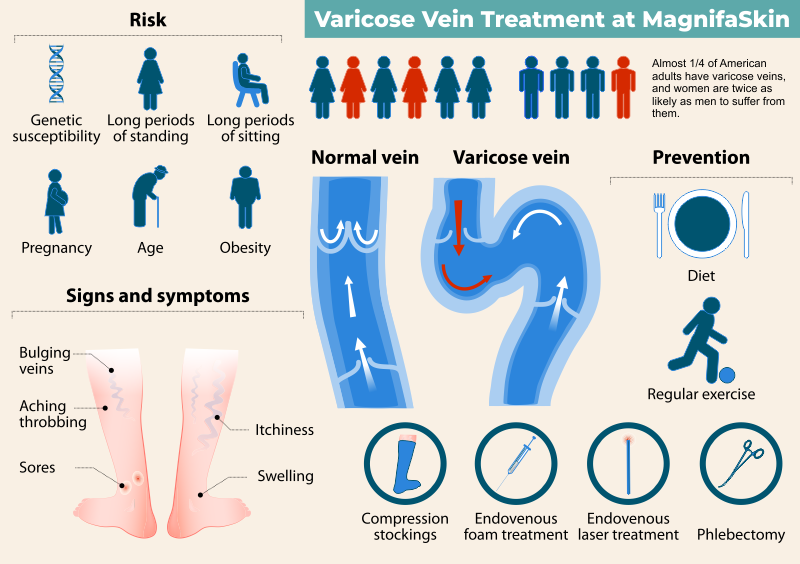
Sclerotherapy is a proven and effective treatment for varicose veins, a common condition affecting almost 1/4 of American adults. We also offer laser therapy for spider veins.
Who Can Have Sclerotherapy?
It’s easier to say who can’t. You’re not a candidate for sclerotherapy if you’re pregnant. You’ll need to wait until after you deliver to have those varicose veins dealt with. If you’ve had a blood clot in the past, you must see your doctor before having sclerotherapy. In addition, sclerotherapy may not be advisable if you have generally poor health.
Preparation
If you are taking any medications which can cause thinning of the blood, such as aspirin, ibuprofen, naproxen sodium or any kind of blood thinner, please consult your doctor before treatment. It may be advisable to stop taking this medication for a short period of time before your treatment.
Don’t shave your legs or apply lotion on the day of the treatment. You also shouldn’t shave the treated area after treatment until it has fully healed. It is recommended to wear loose, comfortable clothing to our spa. In warm weather, you may even want to wear shorts.
What To Expect During a Sclerotherapy Treatment
A treatment typically takes less than an hour and involves minimal pain and discomfort.
You’ll need to lie down with your leg slightly elevated. The area to be treated will be sterilized with alcohol and the solution will be injected directly into the veins with a fine needle. You may experience a stinging or burning sensation immediately following the injection, but this should pass in a minute or two. Discomfort varies from one patient to another. Some people report feeling hardly anything at all, but please let us know if you are experiencing a high degree of discomfort.
The treated area will be massaged and pressure will be applied for a short period after the injection. This compresses the veins and helps the walls to stick together. The number of injections will be in proportion to the size of the area being treated and the number of affected veins.
After Treatment
You’ll be able to get up and walk around immediately after your treatment. In fact, it’s highly advisable to keep moving that day in order to prevent blood clots. Otherwise, most people are able to return to their normal schedule the same day, however, if you do find that you react poorly to medical procedures, in general, you may want to arrange for someone else to drive you home from our clinic.
You will need to wear compression stockings or bandages for about two weeks after treatment – gentlemen, this includes you. While you should keep moving as much as possible during the two weeks of healing, it is advisable to avoid strenuous exercise. You should also avoid sun exposure to the treated area. The inflammation caused by the injections combined with sun exposure can lead to dark spots on your skin, especially if you already have a dark skin tone.

Varicose veins. For some of us, they're not just ugly, but painful or tender and may even result in swelling in our legs and feet.
Results
The amount of time it will take for the treated vein to disappear depends mostly upon the size of the vein. Smaller veins should disappear in about three to six weeks while large ones can take up to four months. For some veins and patients, multiple treatments may be required.
Treated veins will not come back once they have disappeared, but new varicose veins may form over time.
Spider Veins
Spider veins are caused by the same conditions that result in varicose veins. However, due to the smaller size of spider veins, sclerotherapy is often unnecessary. At MagnifaSkin, we can effectively treat spider veins with lasers.

